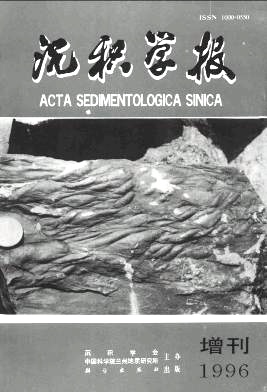Study on the Bioherm Structure of Middle-Late Cambrian Sedimentary Sequences in the North China Platform
- Received Date: 1994-09-16
- Publish Date: 1996-12-31
-
Key words:
- bioherm /
- middle-late /
- cambrian
Abstract: Bioherm sedimentary strutures were well-developed in sedimentary sequences of Middle -Late Cambrian in North China Platform. Bioherm-building organisms include cryptalgae,calcareous algae and non-algae multicelluar organisms which constutited simple type of thrombolite bioherm and composite five types of cryptalgalaminates: wave semispheroidal stromatolites bioherm (Ⅰ), wave-stacked semispheroidal stromatolites-Renalcis bioherm (Ⅱ),Epiphyton-columnar stromatolites bioherm(Ⅲ), wave-stromeatolites-EpiphytonGirvanella-columnar stromatolites bioherm (Ⅳ) and columnar stromatolites-crinoidea-sponge -wave stromatolites bioherm (Ⅴ). The complexity and diversity of bioherms indicate that bioherms can be formed in a wide area from tidal flat to deeper slope.The development process of bioherms underwent four stages: (1) basic stage; (2) pioneering stage; (3) flourishing stage and (d) decaying stage. Each stage was controlled by the relative sea-level changes which controlled the size of bioherms, organism components, inner structures and growing period.Study of sequence stratigraphy showed that most bioherm flourishing periods in the research area are the Gushan and Changshan stages, and bioherms are distributed in the early high system tract in the third-orde cyclic sequence. Bioherm types also change regularly in a sequence, for example, the composite types of Ⅴ, Ⅳ,Ⅲ, Ⅱ and simple type are successively well-developed from the bottom to the top in the sequence Ⅳ of the Dingjiatan section, Beijing west hills and in the sequence Ⅲ of the Xuankongshi section, Hunyuan County, Shanxi Province, This regularity is the products of the different stages of the third-order sea-level changes.The study on the distribution characteristics of bioherms, tempesitites and the research of glanconitic condensed section stated clearly that the latitude zone of Qinhuangdao-Tangshan (Hebei Provence)-Beijing West Hills-Datong (Shanxi Province) was a typical open middle shelf depositional environment in Late Cambrian. The depth was 40-80 meters. South of the zone was a wide inner-shelf belt, and north of the zone was a narrow outer-shelf environment. The conclusion provided the basic framework and important reference for studying the paleogeographic and sea-level changes.
| Citation: | Chen Rongkun. Study on the Bioherm Structure of Middle-Late Cambrian Sedimentary Sequences in the North China Platform[J]. Acta Sedimentologica Sinica, 1996, 14(S1): 49-56. |






 DownLoad:
DownLoad: